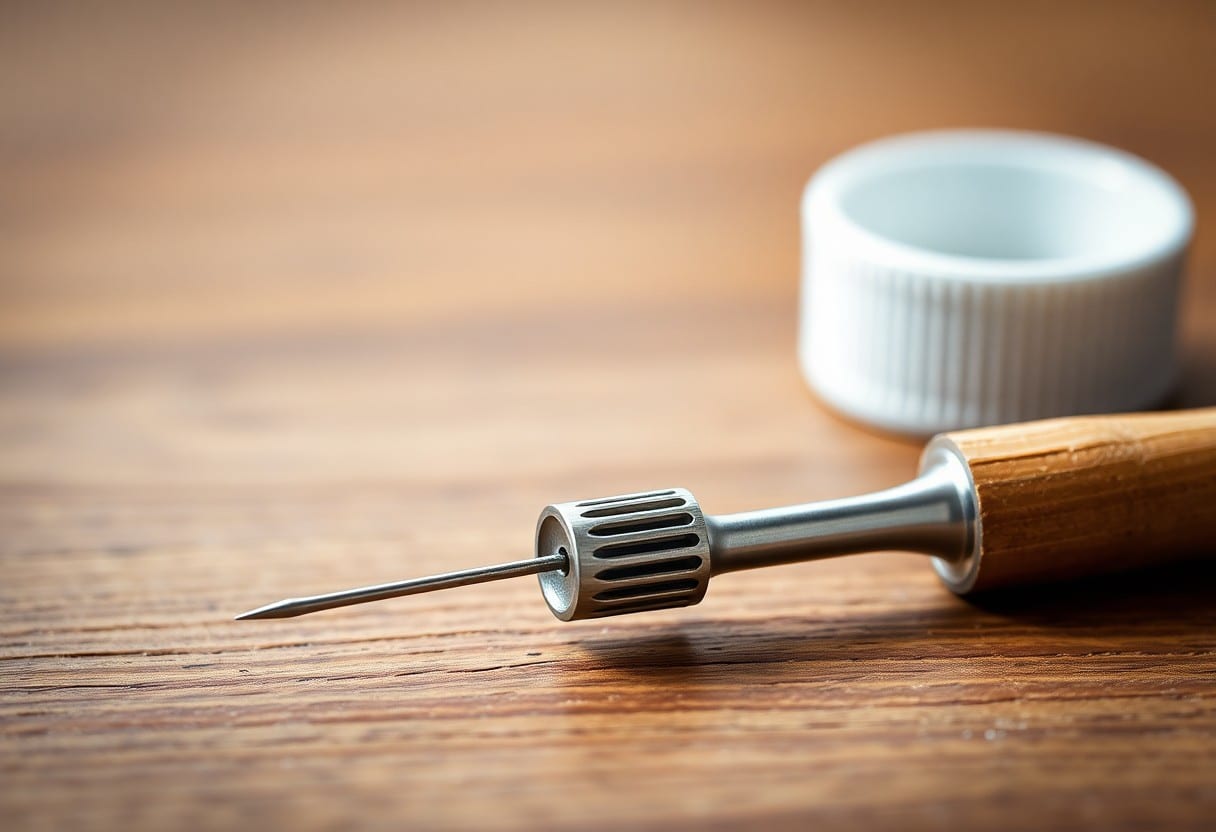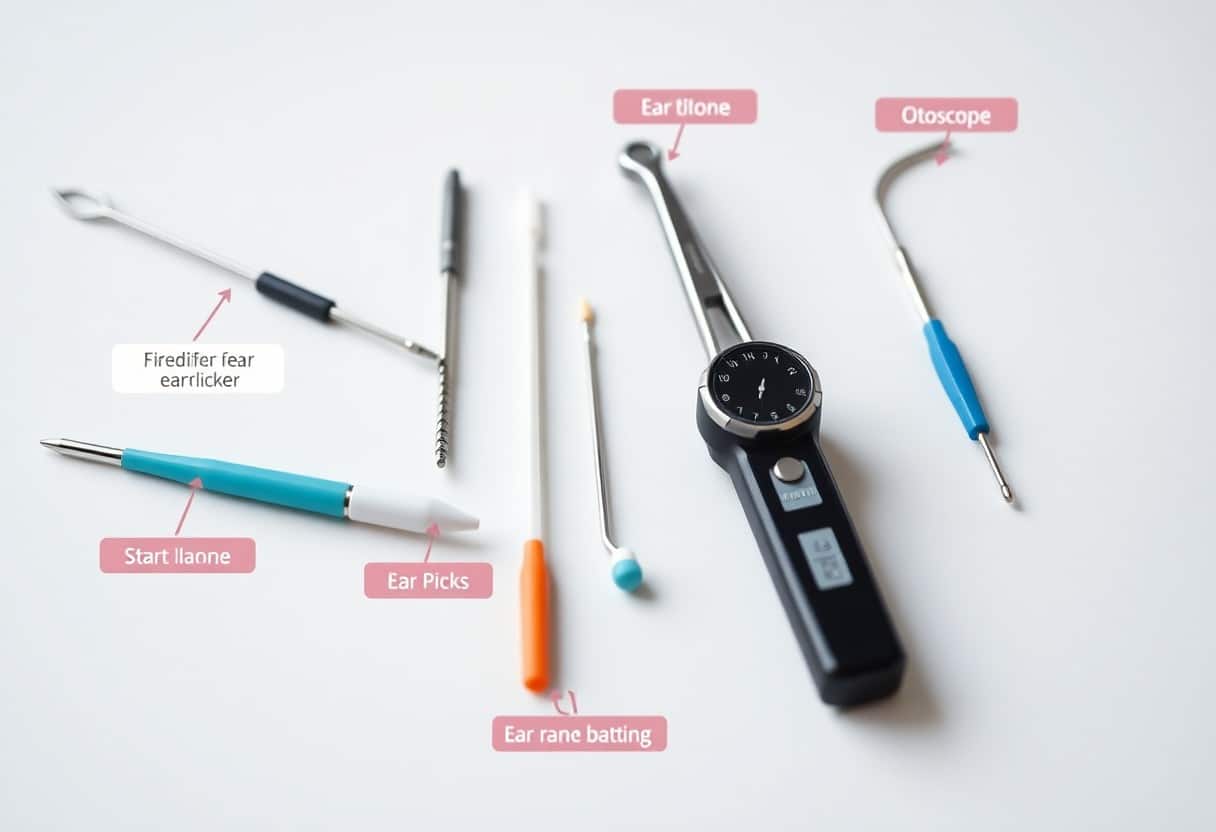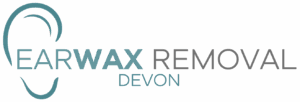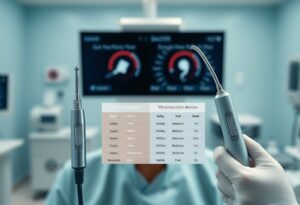The Allure of Ear Picks: Cultural Roots and Modern Appeal
Cultural Significance Across Regions
Ear picks hold a rich cultural heritage in various societies, particularly in Asia. For centuries, they have been utilized in countries like Japan and China, where the practice is often intertwined with rituals of personal care and hygiene. In Japanese culture, the practice of using a “mimikaki” not only addresses earwax removal but also facilitates a moment of relaxation and self-care. These cultural nuances reflect a broader perspective on body maintenance that extends beyond mere functionality.
Modern Popularity in the West
The aesthetic and practical appeal of ear picks has gained traction in Western markets as well. A surge in interest for traditional and holistic wellness solutions has made ear picks popular among those seeking alternatives to cotton swabs. In your pursuit of wellness, ear picks offer a sustainable and eco-friendly option that aligns with the growing trend of reducing single-use products. Many brands now market ear picks made from environmentally friendly materials, capturing the attention of the eco-conscious consumer.
Variety of Designs and Materials
Today’s ear picks come in various designs and materials, ranging from stainless steel to bamboo. This variety allows you to choose based on your personal preferences and values. Stainless steel picks often feature intricate designs, offering both functionality and an artistic appeal. Bamboo, on the other hand, delivers an organic feel and biodegradability, ensuring that your choices have a minimal environmental impact. As you explore different styles, consider how each material can affect your cleaning experience.
The Ritual of Ear Cleaning
Engaging in the ritual of ear cleaning can transform a mundane task into a mindful practice. Many users find that using an ear pick enhances the experience of self-care, providing a sense of intimacy with your body. This ritualistic aspect encourages a slower, more deliberate approach to personal hygiene, where you can take time to appreciate the process and its benefits. Enjoying the tactile sensations and satisfying results can promote a more profound connection with your personal grooming habits.
Health Considerations and Techniques
While ear picks can be appealing, adopting safe techniques is necessary to avoiding injury. The gentle, precise manners in which you use an ear pick can make a significant difference. Position the tool correctly and avoid pushing too deeply into the ear canal, which can lead to damage. Many users find that starting with a few swipes on the outer ear and gradually moving inwards allows for effective cleaning while minimizing the risk of harming delicate skin. Ensuring you maintain cleanliness of the ear pick itself also plays a key role in preserving ear health.
Understanding the cultural roots and modern appeal of ear picks enriches your experience, transforming a simple tool into a meaningful part of your self-care routine.

Key Takeaways:
- Ear picks can effectively remove earwax but may cause injury or infection if not used properly.
- Traditional ear picks come in various designs, while modern tools often incorporate safety features to reduce risk.
- Consulting a healthcare professional for ear cleaning is advisable to ensure safety and effectiveness.
The Anatomy of Earwax: Understanding Its Role and Importance
The Function of Earwax in Ear Health
Earwax serves as a natural protector for your ears, trapping dust, debris, and microorganisms to prevent infections. Secreted by ceruminous glands, it helps maintain the right moisture level within the ear canal, preventing irritation and itching. This sticky substance also promotes the shedding of dead skin cells, making it an imperative component of your ear’s self-cleaning process.
The Myths Surrounding Earwax Removal
Misinformation about earwax removal can lead to unsafe practices. Many believe that earwax should be completely removed for optimal ear health, creating a culture of over-cleaning. This misconception can result in damaging your ear canals and leading to infections instead of benefiting your ear health.
Common myths surrounding earwax removal, such as the idea that clean ears are entirely wax-free, contribute to misconceptions that can be harmful. You may be tempted to use cotton swabs or other tools to eliminate earwax, but this often pushes wax deeper into the ear canal. Such actions can lead to blockage, pain, or even damage to your eardrum. Understanding that earwax plays a vital role in your body’s defense can help you approach ear care with a healthier mindset. Regular self-cleaning is sufficient, and professional assistance is recommended only if issues arise.
Traditional Ear Picks: History and Methodology
Materials and Designs: Influences Across Cultures
Traditional ear picks have evolved from various materials and designs influenced by cultural practices. In Asia, bamboo and metal are commonly used, showcasing intricate shapes and ornamental engravings, while African designs may feature wood or bone, emphasizing both functionality and artistry. Each cultural variation reflects local customs, beliefs, and the significance of ear hygiene, often turning these tools into heirlooms or symbols of status and care.
Skills and Techniques: Mastering Traditional Ear Care
Using traditional ear picks effectively requires practice and a gentle touch. Skilled practitioners often employ specific angles and motions to safely remove earwax without damaging the delicate ear canal. Techniques can differ greatly from culture to culture, with some emphasizing rhythm and others focusing on precision. These methods have been passed down through generations, highlighting the importance of learning from experienced individuals who can impart their knowledge of safe ear care practices.
Mastering traditional ear care techniques involves not just using the ear pick but understanding the anatomy of the ear and the characteristics of earwax production. Many cultures stress the importance of a calm environment during the process to minimize discomfort. Practitioners often rely on visual cues, like the appearance of the wax and the client’s reaction, to adjust their approach. This intuition, combined with trained manual dexterity, allows for a more effective and safe cleaning experience, transforming an ordinary hygiene practice into a ritual steeped in history and expertise.
The Rise of Modern Alternatives: Tools and Innovations
Ear Cleaning Devices: Technology-Enhanced Solutions
Advanced ear cleaning devices are gaining popularity as safe alternatives to traditional tools. Innovations like electric ear wax removers and suction devices utilize gentle, controlled mechanisms to clear earwax while minimizing the risk of injury. Some models even feature integrated cameras, allowing you to visualize the cleaning process. Research shows that these modern tools can effectively remove wax buildup without the complications often associated with manual methods.
The Role of Medical Professionals in Ear Maintenance
Consulting with medical professionals for ear maintenance provides a reliable safeguard against complications from improper cleaning methods. Regular check-ups by an audiologist or an ENT specialist help monitor ear health and address issues like excessive wax buildup or infections. They can safely perform procedures like professional ear irrigation or manual extraction, ensuring your ears remain healthy and comfortable.
Medical professionals often recommend annual check-ups, particularly for those who experience recurrent earwax blockages or have hearing difficulties. Special equipment used in clinical settings can remove wax more effectively than home methods and allows for thorough examination and diagnosis of other potential ear issues. By utilizing their expertise, you guarantee a tailored approach to ear care, significantly reducing the chances of adverse effects that could arise from using unregulated tools at home.

The Safety Debate: Risks Associated with Ear Cleaning Tools
Common Injuries and Complications from Improper Use
Improper use of ear cleaning tools can lead to various injuries, such as perforated eardrums, impacted earwax, and canal lacerations. Reports indicate that approximately 20% of individuals experience these complications after using items like cotton swabs or ear picks, often due to inserting them too deeply or with excessive force. Such injuries may result in pain, hearing loss, and even infection, highlighting the potential dangers of inadequate techniques during cleaning.
How to Minimize Risks When Using Ear Picks
Using ear picks safely involves several precautions to prevent injury. Always ensure that the tool is clean and sanitized before use, and opt for a design that features a safety stop to avoid deep insertion. Gentle movements are key; you should avoid aggressive scrubbing. Additionally, it’s advisable to limit ear-cleaning sessions to avoid irritation, and if wax build-up is significant, seeking professional assistance is the best course of action.
Prioritizing safety while using ear picks includes adopting proper techniques and tools. Using a well-designed ear pick with a rounded tip significantly reduces the risk of injury. Hold your ear gently to stabilize it, and only clean the outer ear canals. If you encounter resistance, stop immediately, as forcing the tool could cause damage. Regular maintenance of your ear health through professional check-ups can provide further protection against excessive buildup and any associated complications.
Expert Opinions: What Audiologists and ENT Specialists Recommend
The Professional Take on Ear Cleaning Practices
Audiologists and ENT specialists often emphasize that your ears are self-cleaning organs. They typically advise against inserting any objects, including cotton swabs and ear picks, into the ear canal, as this can push wax deeper or cause injury. Instead, gentle cleaning of the outer ear with a cloth is usually sufficient, and routine ear examinations can help identify any issues that require professional intervention.
Guidance on When to Use Tools and When to Seek Help
Using ear cleaning tools should be approached with caution, and knowing when to use them versus seeking professional help is vital. If you experience excessive earwax or discomfort that home remedies don’t alleviate, consulting a healthcare professional becomes necessary. Audiologists can recommend the safest methods tailored to your needs, ensuring the health of your ears without risking damage.
Many find themselves in situations where ear discomfort persists despite at-home efforts. In such cases, visiting an audiologist or ENT specialist is the safest course of action. They possess the necessary tools and expertise to safely remove excess wax. Common signs that signal a need for professional help include hearing loss, earache, or drainage. Prioritizing your ear health means recognizing when self-cleaning efforts are insufficient and understanding the importance of seeking expert advice for optimum care.
Best Practices for Ear Care: A Comprehensive Approach
Daily Maintenance Tips and Recommendations
Integrating simple daily habits can significantly enhance your ear health. Cleaning the outer ear with a damp cloth is crucial, while avoiding cotton swabs in the canal prevents potential damage. Regularly inspecting your ears and keeping them dry will also aid in early detection of any issues.
- Wipe the outer ear daily.
- Avoid inserting objects into the ear canal.
- Use earplugs when swimming or exposing ears to water.
- Keep ears dry to prevent infections.
- Do not ignore unusual symptoms such as pain or discharge.
The overall aim is to maintain a clean and safe ear environment.
When to Consult a Medical Professional
An appointment with a medical professional is necessary when experiencing persistent discomfort, pain, or discharge from the ear. Symptoms like hearing loss, vertigo, or blood can indicate underlying issues, requiring expert evaluation. Additionally, if you frequently use ear cleaning tools and notice increased earwax buildup or blockage, seek advice.
Conditions such as ear infections, perforated eardrums, and excessive cerumen can worsen without proper care. Specialists can conduct thorough examinations, offer tailored treatment plans, and suggest effective ear care strategies specific to your needs. Don’t hesitate to prioritize your ear health and consult a professional if you experience concerning symptoms.
Cultural Perspectives: The Global View on Ear Cleaning Practices
Historical Practices vs. Contemporary Understanding
Ear cleaning has deep roots in various cultures, often rooted in traditional beliefs. Historical practices frequently involved tools made from natural materials, such as bamboo or animal bone, believed to promote ear health and hygiene. In contrast, contemporary understanding relies on medical insights emphasizing that earwax plays a critical role in protecting the ear, reshaping how you approach cleaning your ears today.
How Different Cultures Treat Ear Health
Cultural approaches to ear health vary significantly across the globe. In some Asian countries, ear cleaning is a communal activity often performed in salons, reflecting a social bonding aspect. In contrast, Western societies typically encourage minimalist practices, relying on ear drops and professional cleanings rather than frequent DIY methods. This diversity illustrates differing beliefs on ear maintenance and hygiene, shaping how you engage with ear care based on your cultural background.
Countries like Japan and China hold historical significance in ear cleaning rituals; practices often involve specialized ear wax removal sessions that double as social interactions. In these cultures, ear cleaning is seen as a form of self-care, with practitioners trained to delicately extract earwax. Meanwhile, in the West, medical authorities often advise against internal ear cleaning, prioritizing the natural processes of earwax production and self-cleaning. Understanding these varied cultural practices can guide your choices in ear care, aligning your methods with both modern medical advice and cultural perceptions.
Final Thoughts: Navigating the World of Ear Cleaning Safely
Understanding Your Ear Health
Your ears are remarkably self-sufficient when it comes to maintaining cleanliness. The ear canal naturally produces earwax, which plays a protective role by trapping dust and debris. Instead of reaching for tools at the first sign of buildup, consider allowing your ears to manage some of this process themselves. A little earwax is actually beneficial.
Making Informed Choices
Choosing the right ear cleaning method requires careful consideration. If you opt for ear picks, select those that are specifically designed for ear care, avoiding makeshift tools like paperclips or cotton swabs. These can push wax deeper and lead to impaction. Research shows that over 12 million visits to healthcare professionals each year relate to ear problems, many stemming from improper self-care techniques.
Consulting Professionals
Periodic professional cleanings can be a wise investment in your ear health. Audiologists recommend having your ears checked at least once a year, particularly if you frequently use ear-cleaning tools. Professionals are equipped to handle excessive wax buildup safely, often utilizing methods like suction or irrigation that are both effective and risk-free.
Balancing Tradition and Modern Solutions
Some individuals swear by traditional methods, while others favor modern tools or solutions. If you find yourself drawn to ear picks, ensure you’re using them gently and properly. The use of silicone-based tools may reduce the risk of injury, providing a softer option that’s less likely to cause damage.
If you prefer modern solutions, consider chemical ear drops that can soften wax, making removal easier. They’re generally safe and can significantly reduce the need for physical intervention.
Being Mindful of Symptoms
Pay attention to your body’s signals. If you experience pain, itching, or hearing loss, these can be signs that you should seek medical advice rather than attempting to clean your ears further. Addressing these symptoms early can prevent more serious complications, ensuring you maintain optimal ear health.
FAQ
Q: Are ear picks safe to use?
A: When used correctly, ear picks can be safe. However, improper use can lead to ear injuries or infections. It’s important to follow best practices and consult a healthcare professional if unsure.
Q: What are the different types of ear picks available?
A: There are traditional wooden ear picks, metal ear picks, silicone ear picks, and modern electronic ear cleaning devices. Each type has its advantages and drawbacks depending on user preference and comfort.
Q: How should I properly use an ear pick?
A: To use an ear pick safely, hold it gently, insert it only into the outer ear canal, and avoid digging deeply. Clean the tool before and after each use to minimize the risk of infection.
Q: Can ear picks cause earwax impaction?
A: Yes, using ear picks improperly can push earwax deeper into the ear canal, leading to impaction. It’s advised to use them with caution and to adopt alternative techniques if experiencing frequent build-up.
Q: What should I do if I experience pain after using an ear pick?
A: If you experience pain, bleeding, or discomfort after using an ear pick, cease use immediately and consult a healthcare professional for evaluation and treatment.



